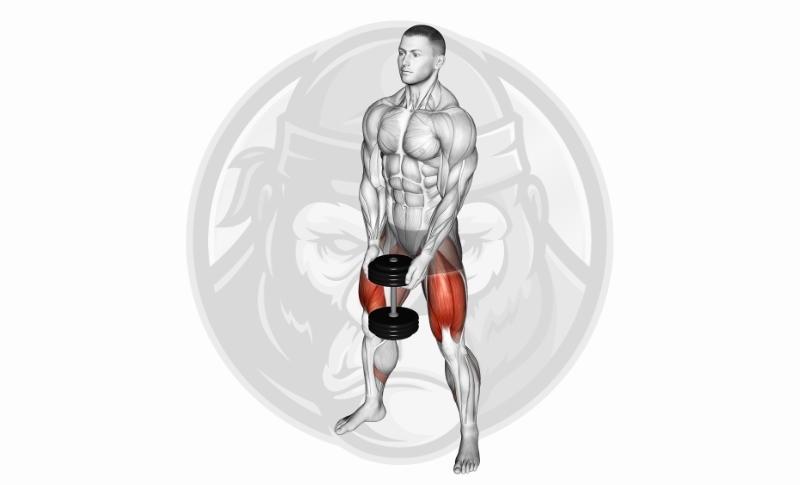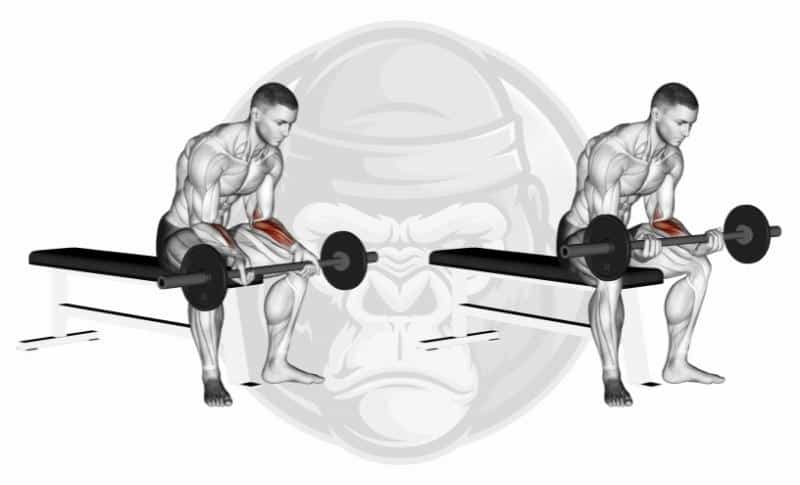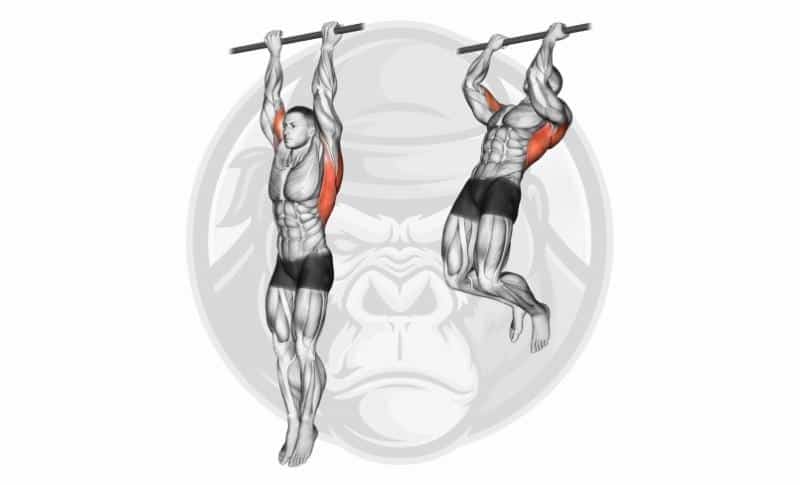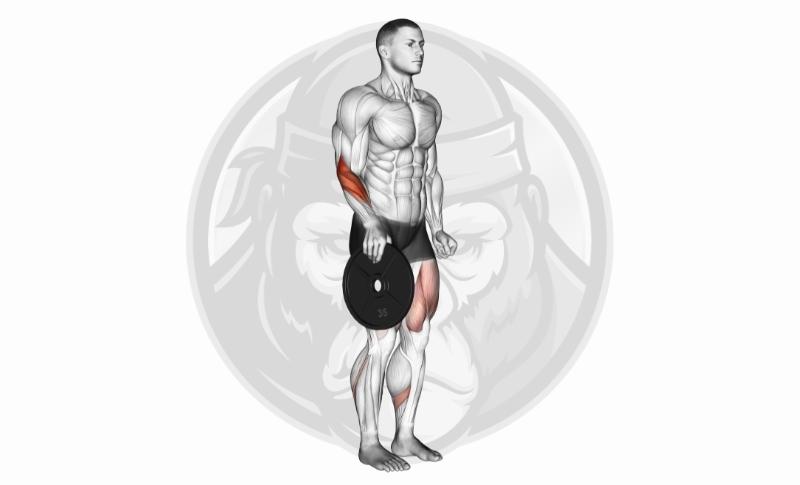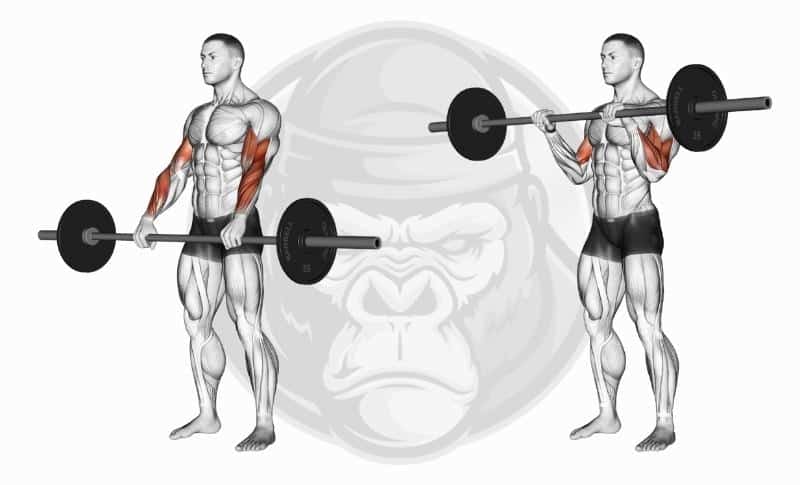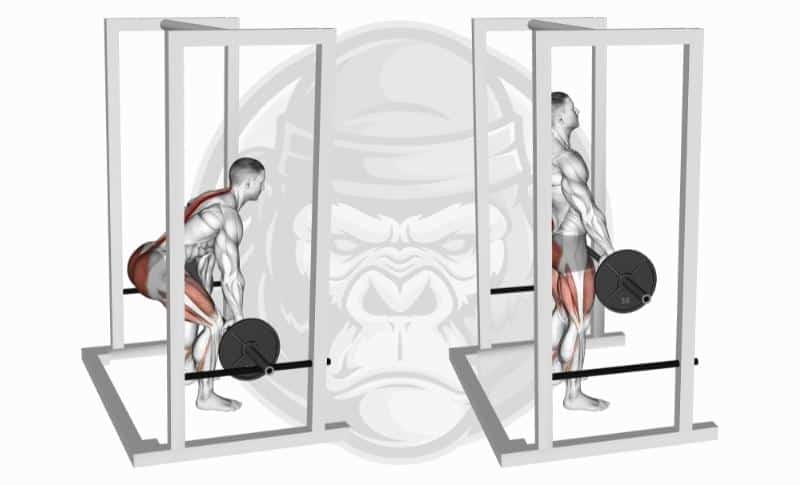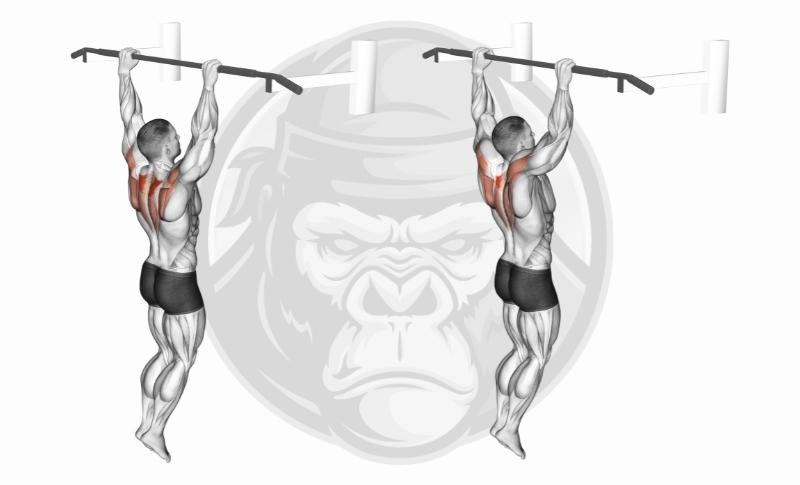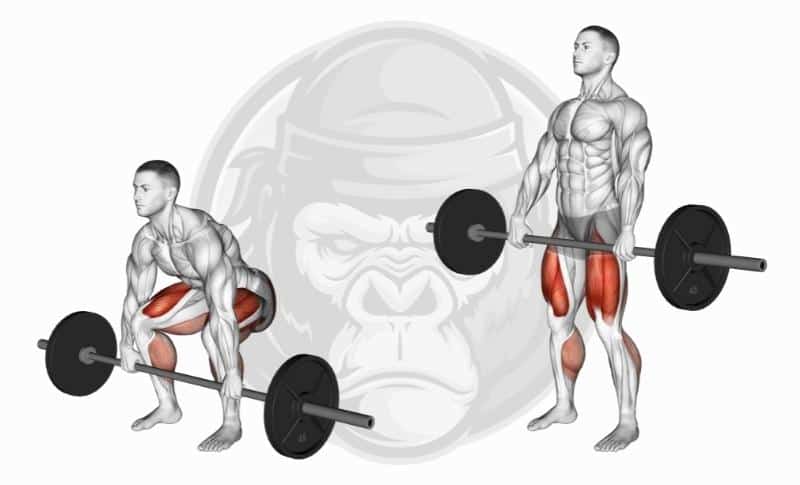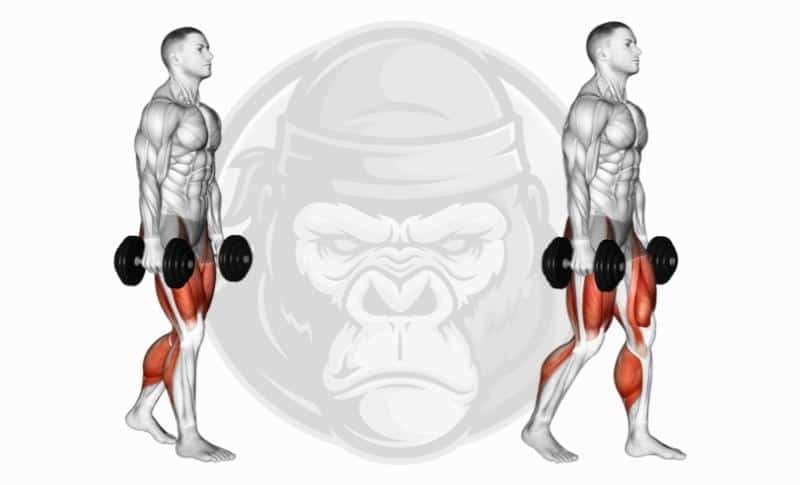Training
The 10 Best Grip Exercises

What are the best grip exercises?
Grip exercises are designed to strengthen your grip, giving you greater power and stability for strength training.
The more you work on your grip, the more effective your efforts to gain muscle will be.
Regular grip exercises improve your grip strength for stronger hands and greater resistance and endurance.
Targeted exercises build strength throughout your fingers, wrists, and forearms for better deadlifts, rows, squats, and more.
To help you reach your strength training goals, try these top grip exercises used by professional lifters and fitness enthusiasts alike.
The Best Grip Exercises
Our exercise lists are created by determining the best exercises for muscle growth, core muscle strength, and overall health and well-being.
Here’s our list of the 10 best grip exercises:
10. Hex Holds
Great for:
Improving grip problems and back/joint issues.
How to do it:
- Hold a pair of dumbbells with each hand wrapped around the weight, not the bar.
- Stand tall with a straight back and your chest out.
- Hold the dumbbells at arm’s lengths out at your sides for as long as possible (the dumbbell ends should stay vertical).
- Once fatigued, lower the weight down to the ground and repeat 3-8 times per set.
Why:
Hex holds have proven effective for grip work because this type of exercise forces the arm muscles to work harder to maintain the hold.
The straight posture also helps ensure healthy strength training that suits those with back and joint issues who want to improve grip strength.
When:
Aim for 2–3 sets of hex holds with 3–8 repetitions each a few times a week.
At first, hex holds will be challenging, so you’ll want to do them in the first half of your workout to help with stamina and endurance.
Over time you can put your arms to the test by pushing hex holds toward the later stages of your workout when fatigue starts to set in.
9. Wrist Curls
Great for:
Muscle growth and healthy joints.
How to do it:
- Sit on a stable weight bench and lean forward.
- Put a barbell or light dumbbells in each hand using an underhand grip.
- Rest your forearms palms up on your thighs with hands hanging off your knee.
- Bend your wrist backward with the weight in your fingertips and curl up to a neutral position.
- Do 8-12 reps in 3-4 sets plus 90 seconds rest.
Why:
Wrist curls are key to stronger forearms as they help develop the wrist muscles by supporting time under tension for upper body movements.
It’s good to focus on these smaller wrist muscles that are often overlooked in direct exercises. By doing wrist curls, you can support muscle growth and joint health.
When:
Wrist curls are fine to do two or three times a week. You can do them as a pre-workout wrist warmup or incorporate them into your arm session.
This isolation grip exercise should improve overall comfort and wrist grip, but make sure you don’t do it too often and risk hurting your wrists.
8. Chin-Ups
Great for:
Boosting forearm muscles and grip strength.
How to do it:
- Stand on a weight bench and jump into your normal chin-up position.
- Hold yourself at chin level for 5-10 seconds before slowly lowering down.
- Once your arms are bent at 90 degrees, repeat the hold.
- Finally, lower until your arms are almost straight for a final hold.
- Relax and repeat for 6-12 reps per set.
Why:
You can do regular chin-ups or incorporate extra rests to promote a stronger grip that benefits your strength training goals for the future.
This awesome isometric core workout helps you achieve more muscular forearms by loading your entire body weight.
When:
If you can do chin-ups two or three times a week with 6-12 reps in each set, you should see improvements in your upper body strength.
This exercise isn’t for the faint of heart as you have to lift your full body weight, so try to do chin-ups closer to the start of your workout.
7. Plate Pinches
Great for:
Training fingers in the pinch grip.
How to do it:
- Stand straight and put a weight plate in your hand.
- Compress your thumb on one side and keep your fingers straight on the other.
- Press against the plate like you’re trying to touch your fingertips to the tip of your thumb.
- Focus on your finger strength and repeat the motion once.
Why:
It’s important to work on all types of grip strength, and plate pinches concentrate particularly on finger grip strength.
It’s easy to increase the difficulty with a thicker or heavier plate, making this a flexible grip exercise to put on your priority list.
Another benefit of plate pinches is they strengthen the finger and thumb muscles simultaneously and can help the weaker side catch up.
When:
Plate pinches target the delicate muscles in your fingers, so you don’t want to overdo it. That’s why it’s best to do two sets once or twice a week.
While this grip exercise should be challenging, you still need to be safe, so make sure you hold the weight appropriately in your grip. You can always add more weight later if you feel up to it.
6. Reverse Curls
Great for:
Working wrists and forearms for a better grip.
How to do it:
- Select a slightly lighter barbell or dumbbell weight than you usually use for bicep curls.
- Draw elbows close to your sides and use your biceps to curl the weight up.
- Bring the weight toward your shoulders but stop before your elbows begin to leave your sides.
- Extend your arms into the starting position and repeat 8-12 times per set.
Why:
Reverse curls are a fun and effective twist on traditional bicep curls, as you repeat the curling motion with downward wrists instead.
The load is heavier on your wrists which builds forearm muscles and contributes to greater grip strength. It also activates the biceps for a stronger upper body overall.
When:
It’s best to do 2-3 sets of reverse curls a few times a week in line with your upper body training routine.
By incorporating reverse curls at the end of your arm workout after bicep curls, you should expect to improve your grip strength while also toning your arms.
5. Towel Pull-Ups
Great for:
Challenging your grip and working your arms.
How to do it:
- Place two towels on the top of your pull-up bar about shoulder-width apart.
- Grip one towel in each hand and let yourself hang fully before going into normal pull-ups.
- The towel grip is more challenging than normal pull-ups, but try to do 6 to 12 reps in a set if you can.
Why:
Pull-ups on their own are good for building back strength, but with the added challenge of towels, you can really work on improving your grip strength.
This unique grip movement is readily available so long as you have towels with you, so you can switch things up and force your muscles to work harder to maintain proper pull-up form.
When:
If you can do around 12 towel pull-ups three days a week, you should start to see a difference in your grip and overall pull-up ability.
Most people prefer to do pull-ups earlier when they have more strength, but this is one of the best grip exercises, no matter where you fit it in during your workout.
4. Rack Pulls
Great for:
Improving overall lockout strength.
How to do it:
- Load the barbell with heavy weights and set it on deadlift blocks or power rack pins.
- Assume your normal deadlift setup with your upper back engaged and your chest high.
- Lift the bar off the pins into a standing position.
- Squeeze your glutes through the pull motion and pause at the top to increase grip strength.
- Aim for 4-6 rack pull reps in one set.
Why:
Rack pulls are a reliable grip exercise with a reduced range of motion, which means you can use heavier weights than regular deadlifts.
This is your chance to increase your lockout strength for better deadlifts while challenging your glutes, calves, lats, hamstrings, and shoulders.
When:
Rack pulls are best put near the end of your workout as a secondary movement that targets weak grip strength.
If you’re determined to build noticeable muscles, shoot for 6-10 reps per set.
As long as you maintain safe form and posture, you can do rack pulls about once a week while alternating with normal deadlifts.
3. Dead Hangs
Great for:
Boosting grip strength and endurance.
How to do it:
- Use an overhand grip on a pull-up bar with your hands positioned just wider than your shoulders.
- Keep your shoulders active and pulled down away from your ears as you hang from the bar.
- Keep a tight core and hold this hanging position for as long as possible with your lats engaged.
- Aim for 45 seconds or even a minute if you can, and repeat once or twice if you’re feeling brave.
Why:
Dead hangs test your overhand grip and challenge you mentally, as these grip exercises are not as easy as they look.
You need to stay determined throughout the entire dead hang to ensure you build strength and endurance, not just in your forearms and wrists but also in your shoulders.
When:
Even experienced fitness enthusiasts say dead hangs are no joke, which is why you should do them around the middle of your workout when you still have the strength and stamina to do so.
If you really want to push yourself, you can save dead hangs for the end before stretching, but just make sure you stick to two or three hangs, so you don’t go too far and risk hurting your muscles.
2. Deadlifts
Great for:
Grip strengthening and muscle activation.
How to do it:
- Set up for a normal deadlift but prepare to add a pause to work your grip.
- With your core tight and back rigid, push through the floor to a standing position.
- Rather than returning immediately to the floor, hold at the top for 5-15 seconds.
- During the hold, squeeze the bar and let your shoulders hang.
- Start with 2 or 3 sets of 6 reps and work your way up as you build strength.
Why:
Deadlifts are a grip exercise all on their own, but when adding in that extra pause, you can really target your grip by holding onto the weight for longer.
This time under tension stimulates muscle hypertrophy and strength while activating the glutes, hamstrings, hips, back, and core all at the same time.
When:
Deadlifts are one of the more hardcore strength training exercises, so doing them once or up to three times a week is preferable.
Make sure you give your body time to rest with at least one or two days off between deadlifts and try to do them toward the beginning of your workout to avoid muscle fatigue.
1. Farmer’s Carries
Great for:
Strengthening grip and improving overall conditioning.
How to do it:
- Hold a dumbbell at your desired weight in each hand.
- Keep your shoulders down and chest up as you walk slowly in a straight line.
- Make sure you maintain a neutral spine as you walk steadily for a certain time or distance, whether it’s for 30 seconds or across the gym and back.
- How many farmer’s carries you do for how long is up to you, although 2 or 3 reps is a good place to start.
Why:
Farmer’s carries are as simple as they are effective, so it’s a great grip exercise that mimics daily activities like carrying in groceries.
By holding weights in your hand as you walk a certain distance or time, you can boost your mental and physical conditioning for a tougher, stronger grip.
When:
Try doing farmer’s carries once or twice a week to improve grip strength with a heavy load and stabilized core.
Remember, you can switch up how much weight you’re carrying based on the dumbbells available to you and your overall arm strength.
However, you’ll definitely want to be warmed up in the first half of your workout before doing farmer’s carries.
FAQs About Grip Exercises
If you have weak grip strength and want to improve your overall fitness levels, then the best grip exercises are the way to go.
We want to make it easier to train your grip, which is why we answered the most frequently asked questions about grip exercises below.
Q: Why Should I Work Out My Grip?
While studies indicate men are more in need of grip strength improvements as they get older, it’s still very important for people of all ages to commit to regular grip exercises to ensure a strong grip.
Your grip strength naturally diminishes over time, so the more you can work the wrist and forearm muscles, the stronger and more flexible they will be.
By working out your grip, you improve your overall comfort level and ability with lifting different weights and performing a wide variety of exercises, from deadlifts to lat pulldowns and so much more.
With a stronger grip, you can do more reps and hold the lift successfully, leading to greater gym gains.
It’s also good for your health to look after your muscles and stay as healthy and strong as possible.
Q: What’s a Good Grip Strength?
Ideally, men with a strong grip can squeeze about 72.6 lb, while it’s around 44 lb for women.
Grip strength is traditionally tested in each hand by squeezing a dynamometer three times.
Of course, even if you don’t quite reach such high levels of grip strength, it’s still important to maintain regular grip exercise routines to ensure weak grip strength isn’t a problem as you get older.
Remember that grip strength is considered a biomarker that indicates aging, so the sooner you start working on your grip muscles, the better your chances are for good health in the years to come.
Q: What Are the Benefits of a Good Grip?
With the right grip work, you can enjoy many benefits of a good grip, including better weightlifting and strength training ability.
After all, the better your grip is, the stronger you can lift and the more gains you can make in the gym. Not only that, but grip strength is also linked to muscular endurance.
A good grip is correlated with a lower risk of stroke and heart attack, so the stronger your hands, the healthier your cardiovascular system may be.
Q: Can You Workout Your Grip Every Day?
Technically, every time you do arm strength training and hold a bar or weights in your arms, you’re testing your grip.
However, for targeted grip exercises that specifically work on wrist and forearm strength, it’s best to do these movements two or three times each week.
By giving your body a bit of a rest between grip workouts, you can actually build stronger muscles through greater endurance and hypertrophy.
Q: When Should You Do Grip Training?
Grip training in your forearms can be done every other day. Aim for two to four sessions a week, preferably at the end of a workout, as these small lifts are a good way to cool down.
Whatever you do, make sure you don’t skip grip workouts for too long, as it provides impressive health benefits for better strength training overall.
Considering muscle mass starts to decline by about 1 percent each year once you hit age 45, it’s important to take preventative steps to ensure strength training is a priority.
Anything you can do to better train your grip and ensure adequate muscle strength, the better, which is why the best grip exercises should be a regular part of your training.
Summary
The best grip exercises give you the chance to improve your grip strength so you can work with heavier weights for successful strength training.
Grip exercises are great for training your hand and wrist to hold your barbell properly. The more grip exercises you do, the better your forearm strength will be in the long run.
Here’s a quick recap of the 10 best grip exercises:
- Farmer’s Carries
- Deadlifts
- Dead Hangs
- Rack Pulls
- Towel Pull-Ups
- Reverse Curls
- Plate Pinches
- Chin-Ups
- Wrist Curls
- Hex Holds

